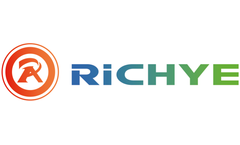Refine by
Solar Array Articles & Analysis: This-Year
8 articles found
Both types use silicon crystal to convert solar energy into power, but the structures of the silicon crystals is what sets them apart. ...
Optimize Efficiency, Safety, and Longevity with Today’s Smart Charging TechnologiesIn the rapidly evolving world of off-grid power systems, the solar charge controller is the unsung hero that governs how your photovoltaic (PV) array interacts with your lithium battery bank. ...
Modern battery backup solutions not only keep essential circuits alive but also integrate seamlessly with solar arrays and smart home platforms. This guide dives deep into the technology, selection criteria, and best practices for installing a home battery backup, empowering you to make informed decisions and enjoy uninterrupted power when it matters most. 1. ...
Yet burning fossil fuels remains the leading cause of greenhouse gas emissions, pushing average global temperatures upward and intensifying extreme weather. Renewable sources—solar, wind, and hydropower—offer clean generation but suffer from variability: clouds, calm winds, or dry seasons can curtail output. ...
For charging, ensure the charger or solar controller follows correct lithium profiles (e.g., bulk voltage around 14.2–14.6V for a 12V bank). ...
Optimize your off-grid or backup power setup with practical sizing guidance As solar installations become more accessible and homeowners seek energy independence, one question often arises: “How many solar panels will reliably recharge my 48 V lithium battery ...
How Solar Battery Backup Systems Operate 2.1 Core Components Overview A typical solar battery backup installation consists of four main elements: Solar Panels (PV Array): Convert sunlight into direct current (DC) electricity during daylight hours. ...
AccuSolar recently completed a landmark floating solar project on a 50-acre reservoir, demonstrating the transformative potential of floating solar technology in renewable energy production1. ...



